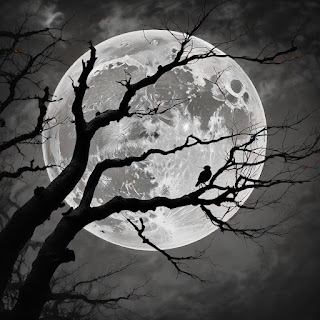The 2024-25 Final Thursday Reading Series concludes with poet and children’s book author Bao Phi. Phi is the author of the poetry collection Thousand Star Hotel (Coffee House Press) and the children’s book A Different Pond (Capstone Young Readers), a Caldecott Honor book. He is also a performance poet who is a two-time Minnesota Grand Slam champion and a National Poetry Slam finalist.
The Final Thursday Reading Series takes place at the Hearst Center for the Arts in Cedar Falls, Iowa. There will be an open mic at 7:00 p.m. (bring your best five minutes of original creative writing). Bao Phi takes the stage at 7:30. The featured reading will also be simulcast on Zoom. Click
HERE to register for a link.
Interview by Maeve Miller.
MAEVE MILLER: In Thousand Star Hotel, you explore your experiences as a Vietnamese American, addressing issues of racism, violence, and discrimination. What role do you see poetry playing in challenging societal prejudices, particularly regarding the “invisibility” you reference in your poems?
BAO PHI: I believe all of us need to contribute to changing the world and engaging in dialogue with the tools we have and in the arenas we operate, and poetry happens to be mine. And not by accident: I come from a big, economically poor refugee family. Poetry is an inexpensive art form, generally speaking, and I gravitated towards it both for those pragmatic reasons and because of the freedom of form it offered.
Because poetry doesn’t have a huge readership in America, I don’t know if it’s the most effective tool to mitigate invisibility, to be honest. But for what it’s worth, I came up through spoken word, and there’s something to the urgency and the audience-building capability of that art form, especially in the late 90s through the early aughts, that provided an opportunity to communicate your ideas to broad swathes of the community. And it helped that a lot of spoken word artists came from various historically marginalized, systemically silenced communities.
MM: Your book also contains powerful reflections on fatherhood and raising a child. How has being a father influenced your poetry and perspective?BP: I didn’t really write biographical poems until I became a father. My first book was largely made up of persona poems. When my partner and I at the time decided to have a child together, we went to a lot of meetings with doctors, care practitioners, doulas, and midwives. I remember going to a meeting where we went through a questionnaire. It asked if anyone in either of our families had survived war. And it really struck me. Although I was just a baby during that trauma, there were studies that suggested that though I may not have conscious memories of it, it's in my DNA, and I'd pass it along to my kid. So I felt like if something were to happen to me, what would my kid have to try and understand that chunk of them that they inherited from me? So I started writing more poems that leaned biographical.
MM: Parents shape our lives and our worldviews in one way or another. Your parents’ experiences as refugees often come up in your poems here—I’m remembering “Frank’s Nursery and Crafts,” “To Combust,” and “Lead,” to name a few. How do you approach writing about trauma that is both personal and intergenerational?
BP: Very carefully. I’m protective of my parents and my kid for very different reasons. There are multiple tensions I hold when writing these poems: how will my parents, who don’t have any power or influence in the American court of public opinion or the literary world, be perceived and subsequently treated? Is what I’m writing useful to anyone, or is it poverty porn, or trauma porn? There are a lot of tensions that, I think, any writer who chooses to explore personal experience has to reckon with.
MM: As a spoken word artist who also publishes written poetry, how does your process differ when writing for the page versus the stage?
BP: There isn’t a difference. I approach both the writing of the poem, and then the reading or performance of a poem, as craft. When I choose to read a poem on stage or on a recording, each poem requires a different approach, a different energy. I write the poem first and worry about the performance later. But I want to emphasize that the reading of the poem is also craft. It’s labor, it’s practice.
MM: You’re also a children’s book author whose work includes the Caldecott Award-winning A Different Pond? Can you talk about that process and what makes it similar to or different from writing poetry?BP: It’s similar in that the art form itself lends to brief and dramatic form. You’re looking to condense. It’s different in that you don’t have to rely solely on your words. There are some things the illustrator can do for you in collaboration. For instance, in my newest book, there’s a part of the story where I want a character to reflect on their past. In a poem, I’d need to do that in verse. But in a picture book, I can make a note that I want the pages to convey a certain set of ideas, and the illustrator and I can collaborate on what those actual images can and will be. In my picture book, A Different Pond, I wanted to convey that the fishing trips the father took their kid on was more about feeding the family, and survival, more than sport. And that sometimes that was desperate and counter to the law. Instead of needing to either explicitly explain that, or figure out a poetic way to say it, the illustrator simply drew a sign on one of the pictures that read “No Trespassing.” These are great questions. Thank you!
.jpg)















.jpg)

